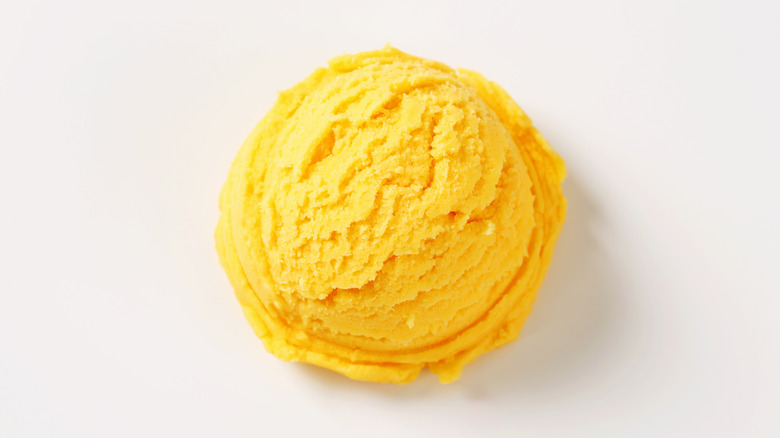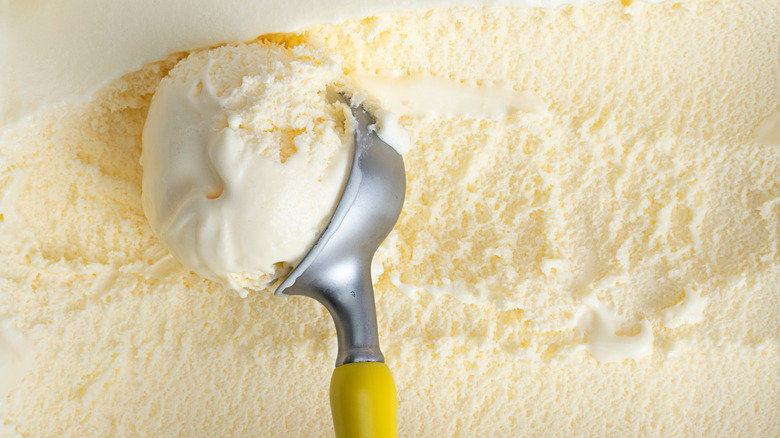Here's The Scoop: The Difference Between Ice Cream And Frozen Custard
What's more satisfying than an icy scoop of sheer, creamy deliciousness? Frozen desserts are the perfect accompaniment to a hot afternoon, a cozy movie night, or any post-dinner occasion. On the surface, frozen custard and ice cream may look indistinguishable from one another — both glistening and smooth. Yet, their recipe and a subtle difference in taste demonstrate the contrasts between the two.
The origins of ice cream are tricky to pinpoint exactly. Still, there is some indication it's been enjoyed, in some form, since 500 B.C. It now transcends geographical boundaries and is relished in diverse ways across different cultures. On the other hand, frozen custard is a much more recent invention. Proudly declared as Wisconsin's favorite dessert, its origins date back to Coney Island, New York, in 1919. The most obvious difference between the two is the presence of egg yolks (ice cream doesn't have to include them). The yolks create a richer, sturdier scoop, thereby giving rise to the formation of frozen custard.
A tale of two scooped desserts
Frozen custard and ice cream share three core ingredients: sugar, milk, and cream. However, according to the Code of Federal Regulations, frozen custard must also contain 1.4% egg yolk solids or more. Many ice creams also contain egg yolks, but this is a rather small amount, less than the quantities used in frozen custard. In order to still be classified as ice cream, the recipe must contain less than 1.4% egg yolks.
The addition of the yolks is what makes the texture of frozen custard so creamy, akin almost to velvet on the tongue. This texture also means it's less likely to form gritty ice crystals that usually coat the top layer of your opened ice cream tub. Ice cream can, of course, be smooth as well, but it generally has a lower fat content. In other words, it is lighter than frozen custard. This light and heavy contrast is also reflected in the taste. Frozen custard also has this added richness that ice cream can't achieve without egg yolks. However, if you are making homemade ice cream, you can always add egg yolks to mirror this depth. Just be aware that the more you add, the more likely you are to transform your ice cream into frozen custard.
A couple more spoonfuls of frozen dessert facts
Adding egg yolks to the mix also impacts the nutritional differences between frozen custard and ice cream. Frozen custard is higher in protein and calcium than ice cream, but since frozen custard is more dense than ice cream — it usually makes it more calorie-dense. Regarding nutritional aspects, it is generally challenging to differentiate the two significantly, especially considering that flavors and additives can greatly affect the calorie and nutrient content.
Lastly, an obvious difference you may also identify between frozen custard and ice cream is the versatility of flavors. Whether you're a mint choc chip fan or prefer a slightly boozy rum and raisin – there is always an ice cream flavor to match the mood. There is some flexibility in frozen custard, as Culver's has just released two new frozen custard flavors, but it doesn't quite match the variety of ice creams available. With this newfound clarity, hopefully, you can now venture into the frozen aisle, knowing the core differences between ice cream and frozen custard.


